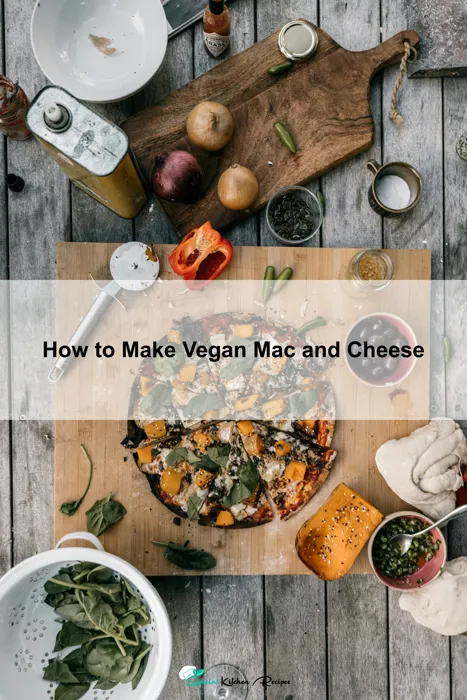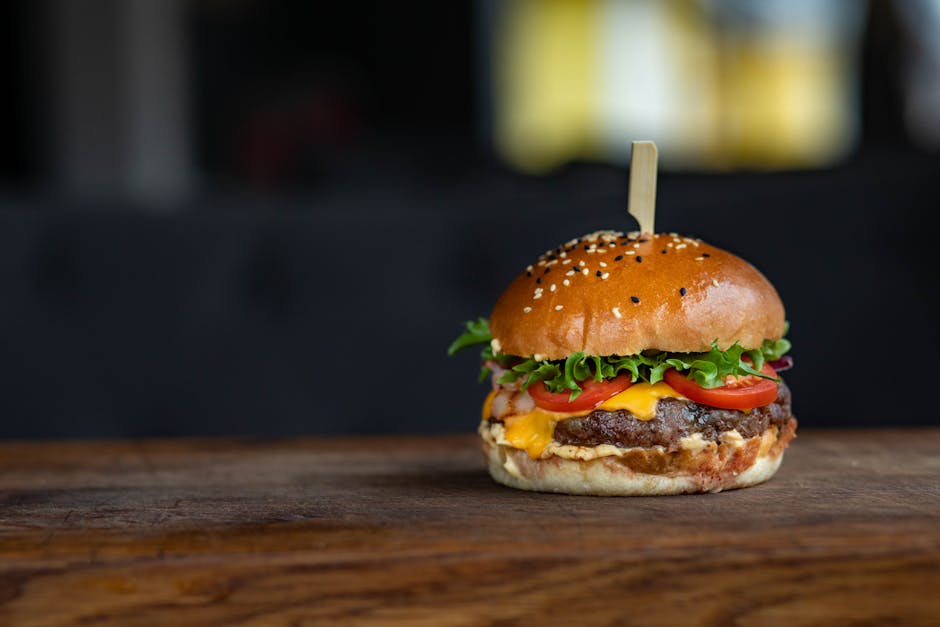Mac and cheese, a culinary cornerstone of American comfort food, boasts a surprisingly complex history. While its exact origins are debated, the dish’s foundational elements—pasta and cheese—trace back centuries. Pasta, a staple in Italian cuisine, evolved from simple doughs to the diverse shapes we know today. Cheesemaking, meanwhile, has ancient roots, with evidence suggesting its practice dating back thousands of years to various cultures across the globe. The combination, however, truly took hold in the United States, gaining popularity in the late 19th and early 20th centuries. Early versions often incorporated a béchamel sauce, layering richness and creaminess onto the simple pasta and cheese base. This initially aristocratic dish gradually became democratized, transforming into a beloved family favorite and a staple in school cafeterias across the nation.
Today, mac and cheese holds a significant place in American culture, representing nostalgia, comfort, and a sense of home. It’s frequently featured in holidays, potlucks, and family gatherings, solidifying its status as a true national treasure. The dish’s versatility is undeniable, with countless variations emerging over time—from baked to stovetop, creamy to sharp, and now increasingly vegan. The rise of veganism, driven by ethical, environmental, and health concerns, has led to a surge in demand for plant-based alternatives to traditional comfort foods. The global vegan food market shows incredible growth, with a projected value exceeding $31.4 billion by 2027, demonstrating a clear shift in consumer preferences. This growing market has spurred innovation in vegan cheese making, opening up exciting possibilities for recreating classic dishes like mac and cheese.
This recipe focuses on crafting a delicious and satisfying vegan mac and cheese that rivals its dairy-based counterpart. We’ll explore techniques for achieving a luxuriously creamy texture and a rich, cheesy flavor using readily available plant-based ingredients. Forget the notion that vegan mac and cheese is a compromise; this recipe proves it can be a truly decadent and satisfying meal, perfect for vegans and non-vegans alike. Get ready to experience the joy of a classic comfort food, reimagined for a new generation, and discover how easy and delicious it is to make a plant-based version that will impress even the most dedicated cheese aficionado.
Ingredients and Measurements
This recipe yields a creamy, cheesy vegan mac and cheese that serves 4-6 people. Accuracy in measurements is key to achieving the perfect consistency, so please use a kitchen scale for the most precise results, especially for the starches.
Pasta: 1 pound (450g) elbow macaroni or your preferred pasta shape. Recommendation: Use a pasta specifically designed for baked dishes, as it tends to hold its shape better during baking and reheating. Avoid using very small pasta shapes, as they may become mushy.
Cashews: 1 cup (140g) raw cashews, soaked in boiling water for at least 30 minutes, or preferably overnight. Why soak? Soaking cashews significantly softens them, leading to a much smoother and creamier sauce. Draining them thoroughly before blending is crucial to prevent a watery sauce.
Nutritional Yeast: ½ cup (40g) nutritional yeast. This is the key ingredient for that cheesy flavor! Tip: Use a high-quality nutritional yeast for the best taste. Different brands can vary in flavor intensity.
Plant-Based Milk: 1 cup (240ml) unsweetened plant-based milk (cashew, almond, or soy milk work well). Recommendation: Avoid using milk with added sugars. Unsweetened milk allows you to fully control the sweetness level of the mac and cheese.
Lemon Juice: 2 tablespoons fresh lemon juice. This adds brightness and helps balance the richness of the sauce. Fresh is best! Bottled lemon juice often lacks the vibrant flavor of fresh lemon juice.
Garlic Powder: 1 teaspoon garlic powder. Alternative: 1 clove fresh garlic, minced, can be used instead.
Onion Powder: ½ teaspoon onion powder. Alternative: ¼ of a small onion, finely chopped, can be sautéed and added for a more pronounced onion flavor.
Salt: 1 teaspoon salt, or to taste. Important: Start with 1 teaspoon and adjust to your preference. Taste the sauce before adding more salt.
Black Pepper: ½ teaspoon black pepper, or to taste. Freshly ground black pepper is always recommended for the best flavor.
Vegan Butter: 2 tablespoons vegan butter. This adds richness and helps create a smooth sauce. Recommendation: Use a high-quality vegan butter for the best flavor and texture.
Optional additions: Consider adding ½ cup of cooked vegetables like broccoli or peas for added nutrition and flavor. A pinch of turmeric can enhance the color of the sauce, making it appear more like traditional mac and cheese.
Equipment List
Making creamy, dreamy vegan mac and cheese requires the right tools to ensure a smooth and efficient cooking process. This list details the essential equipment, along with recommendations for optimal performance and substitutions where possible.
Large Pot (at least 6-quart): You’ll need a spacious pot to comfortably cook the pasta and prepare the cheese sauce. A larger pot is preferable to prevent boil-overs and ensure even cooking of the pasta. Avoid using non-stick pots for making cheese sauces as they can sometimes react with the ingredients and affect the texture. Stainless steel or enamel-coated pots are excellent choices.
Colander: A colander is essential for draining the cooked pasta. Choose a colander that is large enough to accommodate the quantity of pasta you’re making. A fine-mesh colander will prevent smaller pasta pieces from slipping through.
Whisk: A good quality whisk is crucial for creating a smooth and lump-free cheese sauce. The whisk helps to incorporate the vegan cheese and other ingredients thoroughly, preventing any clumping. A balloon whisk is ideal due to its larger surface area.
Measuring Cups and Spoons: Accurate measurements are key to achieving the desired consistency and flavor in your vegan mac and cheese. Invest in a set of reliable measuring cups and spoons to ensure consistent results. Using a kitchen scale for measuring ingredients like flour and vegan cheese is highly recommended for precision.
Spatula or Wooden Spoon: You’ll need a spatula or wooden spoon for stirring the cheese sauce and ensuring everything is evenly combined. A heat-resistant spatula is preferable for preventing damage during cooking. A silicone spatula is a good all-around choice due to its flexibility and heat resistance.
Large Bowl: A large bowl is necessary for mixing the cooked pasta and the cheese sauce. The bowl should be large enough to comfortably accommodate both without overflowing. Choose a bowl that is sturdy and easy to clean.
Optional Equipment: While not strictly necessary, an immersion blender can greatly assist in achieving an exceptionally smooth cheese sauce. A food processor can also be used to blend the sauce, but ensure it’s properly cleaned before use to avoid any flavor contamination.
Important Note: Always ensure your equipment is clean and dry before starting. This prevents cross-contamination and ensures the best results when making your vegan mac and cheese.
Instructions: Preparing the Sauce
The creamy, dreamy sauce is the heart of any vegan mac and cheese, and getting it right is key to a truly satisfying dish. We’ll be making a cashew-based sauce for its rich, naturally creamy texture and mild flavor that won’t overpower the pasta or other additions. Begin by soaking 1 cup of raw cashews in hot water for at least 30 minutes, or preferably an hour. This softens them considerably, leading to a smoother, silkier sauce.
Once the cashews are softened, drain them thoroughly. This step is crucial; excess water will thin your sauce. Add the drained cashews to a high-speed blender along with 1 ½ cups of nutritional yeast (for that cheesy flavor!), ½ cup of unsweetened plant-based milk (almond or soy work well), ¼ cup of lemon juice (this brightens the flavor and helps emulsify the sauce), 2 tablespoons of olive oil, 1 teaspoon of garlic powder, ½ teaspoon of onion powder, ½ teaspoon of salt, and ¼ teaspoon of black pepper.
Blend on high speed until completely smooth and creamy. Scrape down the sides of the blender as needed to ensure everything is incorporated evenly. You may need to stop and start the blender a few times to achieve the desired consistency. If the sauce is too thick, add a tablespoon or two of plant-based milk at a time until you reach your preferred consistency. If it’s too thin, simply blend for a longer period, allowing the mixture to thicken slightly.
Taste the sauce and adjust seasonings as needed. You might want to add more nutritional yeast for a stronger cheesy flavor, more lemon juice for brightness, or more salt and pepper to taste. Don’t be afraid to experiment! A pinch of smoked paprika or turmeric can add depth and complexity. Once you’re happy with the flavor, set the sauce aside while you prepare the pasta.
Professional Tip: For an extra-smooth sauce, strain the blended cashew mixture through a fine-mesh sieve before adding it to the pasta. This removes any small bits of cashew that might remain, resulting in an incredibly luxurious texture. However, this step is optional and won’t significantly impact the overall taste.
Instructions: Cooking the Pasta
The perfect vegan mac and cheese starts with perfectly cooked pasta. We’ll be using 1 pound (450g) of elbow macaroni, but feel free to substitute your favorite short pasta shape. Avoid using long pasta shapes like spaghetti or linguine, as they won’t hold the sauce as well.
Begin by bringing a large pot of salted water to a rolling boil. Use a pot large enough to comfortably hold the pasta without overcrowding. Overcrowding will prevent the pasta from cooking evenly and result in sticky, clumpy noodles. Aim for at least 6 quarts (5.7 liters) of water for 1 pound of pasta.
Once boiling, add 2 tablespoons of kosher salt to the water. This seasons the pasta from the inside out, resulting in more flavorful noodles. Don’t skip the salt! It’s crucial for proper pasta cooking and taste.
Carefully add the pasta to the boiling water, stirring gently to prevent sticking. Cook according to package directions, usually around 8-10 minutes, until the pasta is *al dente*. This means the pasta should be tender but still have a slight firmness to the bite. Overcooked pasta will become mushy and ruin the texture of your mac and cheese.
To check for doneness, taste a piece of pasta. If it’s cooked through but still offers a slight resistance, it’s ready. If it’s too soft, you’ve overcooked it. If it’s too firm, continue cooking for another minute or two and check again.
Once the pasta is cooked, immediately drain it in a colander. Do not rinse the pasta! The starch on the pasta helps the sauce cling to the noodles, creating a creamier, richer mac and cheese. Set the drained pasta aside while you prepare the vegan cheese sauce.
Pro Tip: For extra creamy mac and cheese, reserve about 1/2 cup of the starchy pasta water before draining. You can add this to the cheese sauce at the end to help thin it out and create a smoother consistency if needed.
Instructions: Combining Sauce and Pasta
Once your pasta is cooked al dente (firm to the bite) and your vegan cheese sauce is creamy and smooth, it’s time to bring them together for the perfect vegan mac and cheese. Proper technique here is key to achieving a luscious, evenly coated dish.
First, reserve about ½ cup of the pasta cooking water before draining. This starchy water acts as a crucial emulsifier, helping to bind the sauce to the pasta and prevent a dry, separated texture. Don’t skip this step!
Drain your pasta thoroughly in a colander. Immediately transfer the hot pasta back to the pot you cooked it in. This prevents the pasta from sticking together and cooling down too quickly, which can hinder sauce adhesion.
Gradually add your vegan cheese sauce to the hot pasta, stirring continuously with a large spoon or spatula. Start with about ¾ of the sauce, incorporating it fully before adding the rest. This ensures even coating and prevents clumping. Work quickly but gently to avoid breaking the pasta.
If the sauce seems too thick, add a tablespoon or two of the reserved pasta water at a time, stirring constantly until you reach your desired consistency. Aim for a creamy sauce that coats each strand of pasta without being overly watery. Taste and adjust seasoning as needed; you might want to add a pinch more salt, nutritional yeast for extra cheesy flavor, or a dash of black pepper.
For extra richness and creaminess, consider stirring in a tablespoon or two of vegan butter or oil at this stage. This will add shine and a velvety texture to your mac and cheese. If using, add it after the pasta water, allowing it to melt fully into the sauce.
Once the sauce is evenly distributed and the pasta is perfectly coated, your vegan mac and cheese is ready to serve. Serve immediately for the best texture and flavor. If you need to hold it for a short time, keep it warm over very low heat, stirring occasionally, to prevent sticking and drying out.
Important Note: The amount of pasta water needed may vary depending on the type of pasta and sauce used. Always start with a small amount and add more as needed to achieve the desired consistency. Observing the texture and consistency is key to success.
Instructions: Adding Flavor and Texture (Optional Toppings)
Once your creamy vegan mac and cheese is ready, the fun really begins! This is where you can personalize your dish and elevate it to the next level with a variety of optional toppings. Remember to add these after removing the mac and cheese from the heat to prevent the sauce from becoming too thin.
For a boost of savory flavor, consider adding 1/4 cup of nutritional yeast for a cheesy, nutty taste. Sprinkle it evenly over the mac and cheese before serving. Alternatively, you could use a tablespoon of vegan Worcestershire sauce stirred gently into the finished dish for a depth of umami. Be cautious with Worcestershire sauce, as a little goes a long way. Start with a smaller amount and add more to taste.
To add some crunch and texture, toasted breadcrumbs are a fantastic option. Make your own by tossing 1/2 cup of breadcrumbs with 1 tablespoon of olive oil and a pinch of salt and garlic powder. Spread them on a baking sheet and bake at 350°F (175°C) for about 8-10 minutes, or until golden brown and crispy. Sprinkle generously over the mac and cheese.
For a spicy kick, try adding some finely chopped jalapeños (1-2, depending on your spice preference) or a dash of your favorite hot sauce. Remember that heat builds, so start with a small amount and add more if needed. A sprinkle of red pepper flakes can also provide a subtle warmth.
If you’re looking for a fresh element, consider adding some chopped fresh herbs like 1/4 cup of parsley or chives. These herbs will add a bright, vibrant flavor and a pop of color. A handful of roasted cherry tomatoes, halved, could also add a burst of sweetness and acidity.
Important Note: When adding toppings, consider the overall balance of flavors and textures. You don’t want to overwhelm the creamy base. Start with small amounts and taste as you go, adjusting to your preference. Experiment with different combinations to find your perfect vegan mac and cheese creation!
Recommendations
For the creamiest vegan mac and cheese, we highly recommend using a combination of cashew cream and nutritional yeast for the ultimate cheesy flavor and texture. Experiment with different types of pasta; shells, rotini, or even cavatappi work wonderfully. Don’t be afraid to add your own spin! Consider incorporating roasted vegetables like broccoli or butternut squash for added nutrients and flavor.
Serving Suggestions: This vegan mac and cheese is delicious on its own, but it pairs beautifully with a variety of dishes. Serve it as a comforting side dish alongside roasted vegetables, a hearty salad, or grilled tofu/tempeh. For a complete meal, consider adding some crispy fried onions or breadcrumbs for added texture and flavor. A sprinkle of fresh herbs like parsley or chives adds a final touch of freshness.
Storage: Leftover vegan mac and cheese can be stored in an airtight container in the refrigerator for up to 3 days. Reheat gently on the stovetop or in the microwave, adding a splash of plant-based milk if needed to restore creaminess. Freezing is also possible; allow the mac and cheese to cool completely before storing in a freezer-safe container for up to 2 months. Thaw overnight in the refrigerator before reheating.
Nutritional Information (per serving, approximate): The nutritional content will vary depending on the specific ingredients and quantities used. However, a typical serving will likely contain approximately 350-450 calories, 15-20g of fat, 30-40g of carbohydrates, and 10-15g of protein. This is a rich dish, so moderation is key. The nutritional value can be significantly improved by adding vegetables.
Important Note: Always check the nutritional information on your specific ingredients, as values can vary between brands. This recipe is intended as a guideline, feel free to adjust seasonings and ingredients to your liking. Enjoy your delicious and comforting vegan mac and cheese!





